If you open a can of mixed nuts, the Brazil nut is bound to attract your attention. It’s characterized by its large size, oblong shape, very distinct flavor, and scarcity in comparison to any of the other types of nut in the can. One would never imagine that the story of the mere existence of these unique nuts is an extraordinary, evolution-defying tale. A tale of symbiotic relationships among highly complex organisms, with very specialized features: the Brazil nut tree, the Euglossa Orchid Bee, the Coryanthes vasquezii orchid, and a small rodent called the agouti.
Why is the case of the Brazil nut evolution-defying? Because, by definition, the theoretical process of evolution is mindless. Douglas J. Futuyma explains in his book Evolution, which is used as a college level evolutionary biology textbook:
“[Darwin’s] alternative to intelligent design was design by the completely mindless process of natural selection, according to which organisms possessing variations that enhance survival or reproduction replace those less suitably endowed, which therefore survive or reproduce in lesser degree. This process cannot have a goal, any more than erosion has the goal of forming canyons, for the future cannot cause material events in the present. Thus the concepts of goals or purposes have no place in biology (or any other of the natural sciences), except in studies of human behavior.” (p. 282)
Acknowledging evolution’s integral aspect of mindlessness, let’s consider the curious case of the Brazil nut tree.
The Brazil Nut Tree
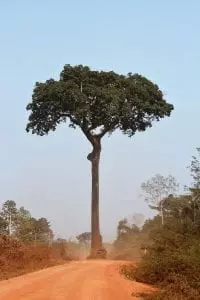
The PBS Nature article, The Amazing Brazil Nut Tree, describes this jungle tree as one of the “giants of South America’s Amazon.” It reaches heights of 200 feet and its ball-shaped fruit “can weigh up to 5 pounds.” When the fruit falls from the tree, this height and weight combination can result in plummeting “cannonballs” reaching 50 miles per hour. Taking a walk through the jungle during Brazil nut season can be quite dangerous. In his Smithsonian article, David Taylor cites biologist Enrique Ortiz:“’You sometimes see animals staggering around with large welts’ where they’ve been struck… The four- to six-pound pods hit the ground with a force that can — and does — kill a man.” Still, these pods are virtually indestructible. They don’t break upon impact.
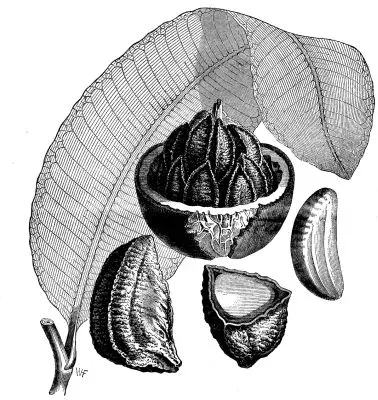
Taylor writes, “Each pod holds 10 to 25 Brazil nuts, which are technically seeds, arranged inside a pod like sections inside an orange.” Additionally, “Brazil nut trees flower at the start of the rainy season; each flower lasts just one day.” This New York Botanical Garden article documents an additional complication, the difficulty of Brazil nut flower pollination, described by Mori and Prance in their 1990 study. This Brazil Nut site states the pollination conundrum in simple terms:
“Brazil nut flowers are big, tough, complexly coiled yellow flowers with a heavy hood. They can only be pollinated by large-bodied bees that are strong enough to pry open the flower.” But, there’s more: “The Brazil nut tree’s yellow flowers contain very sweet nectar and can only be pollinated by an insect strong enough to lift the coiled hood on the flower and with a tongue long enough to negotiate the complex coiled flower. ”
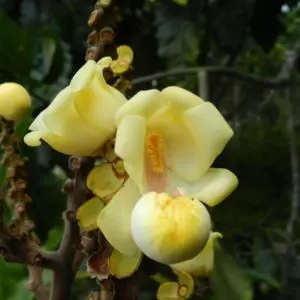
According to the PBS Nature article, these facts have presented “a puzzle to biologists. For one thing, they couldn’t figure out what kind of animal was able to break open the rock-hard fruits so that the nuts could sprout into new trees. For another, it wasn’t clear why only trees in undisturbed forests bear fruit.”
Solving the Pollination Problem- Euglossa Orchid Bees
The solution to the Brazil nut tree’s pollination problem has two parts. The first part is dependence upon the mating habits of the Euglossa Orchid Bee. The role these bees play sheds some light on why Brazil nut trees only produce fruit in “undisturbed forests.” The Brazil nut site explains that these particular bees “like to live in wild undisturbed forests, that contain orchids.” No bees, no fruit.
The female Euglossa Orchid Bee just so happens to fit the specific description required to enable her to pollinate the Brazil nut flower . Encyclopedia Britannica explains, “Their tongues, measuring up to 4 cm (1.6 inches) in some species, are used to access deep, narrow flower structures, some of which can only be reached by euglossines.” In fact, the same source adds that, in the case of the Brazil nut flower, pollination is “carried out almost exclusively by euglossines.”
Not so fast… the issue isn’t completely resolved. This particular female happens to be very finicky when it comes to mating rituals. In fact, she will not mate at all unless the male Euglossa Orchid Bee has precisely the right smell. An aroma he can only obtain by pollinating a specific type of flower- the Coryanthes vasquezii orchid. How does the male know where to go to get this special perfume? He gets a little help from the plant itself…
Solving the Pollination Problem- Coryanthes Vasquezii Orchid
This article from the University of Florida Entomology and Nematology provides the answer to the second part of the pollination problem:
“Orchids will produce scents that attract males of a particular species of bee that is the right size and shape to pollinate them. This relationship is not always chemical; some species of orchid go so far as to produce flowers that physically mimic a female bee as an attractant. Orchids will then affix a pollinarium to the bee which is carried to another orchid of the same species.”
Pollinating the Coryanthes vasquezii orchid gives the male Euglossa Orchid Bee precisely the scent he needs to attract the female Euglossa Orchid Bee.
Just how delicate is this balance? The same source says:
“In disturbed habitats, or where Brazil nut trees are grown in plantations, orchid flowers are scarce and males cannot find fragrance to attract females. Without reproduction, bee populations decline and the unpollinated trees fail to produce these delicious and economically important nuts.”
Once the flowers are pollinated and fruit is produced, we still have one more piece to the puzzle. How will the nuts break free from their practically indestructible pod, get planted, and grow into new trees? Enter the agouti…
Agouti
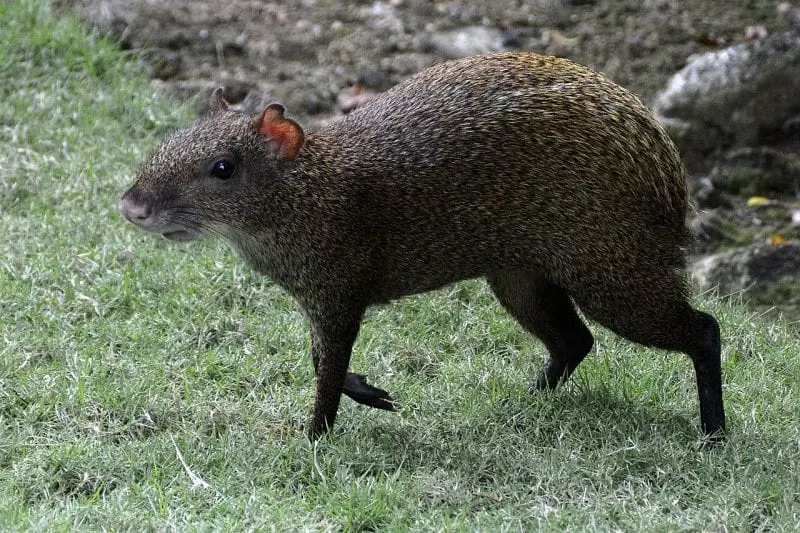
The agouti is a rodent “related to guinea pigs” and similar in appearance, except they “are larger and have longer legs.” Weighing from 5-13 pounds and measuring approximately 15-29 inches long, these creatures come in varying colors: “brown, reddish, dull orange, greyish or blackish, but typically with lighter underparts.”
The PBS Nature article explains their importance with respect to the Brazil nut tree:
“Agoutis have small, chisel-like teeth that can penetrate the Brazil nut’s seed case. They eat some of the nuts. But, just as important, they carry away and bury others for future meals. If forgotten, these seeds can stay dormant in the soil for years, waiting for the perfect conditions to germinate and grow into a new Brazil nut tree.”
Evolution-Defying
Without the symbiotic relationships between these organisms, each of which is highly complex and specialized, there would be no Brazil nuts. Mindless evolution, which cannot have “goals,” has no explanatory power for the extraordinary existence of the Brazil nut tree. To imagine otherwise is to stretch the bounds of both statistical probability and credulity. Those who reject the religion of scientific naturalism, however, can see a Creator sized footprint in the tale of the Brazil Nut.

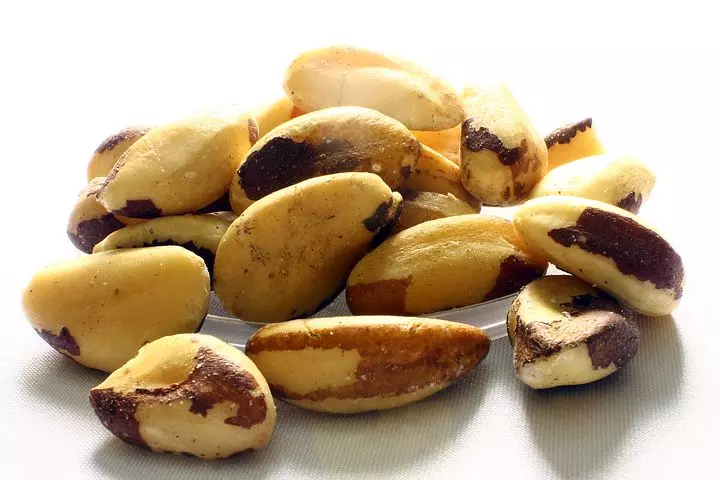






Although it practically begs for the application, I will try to be a better person and refrain from applying this article’s subject of “nuts” to those who hold to evolutionary theory! Same for the article’s statement that “the theoretical process of evolution is mindless.” I again will be nice and not apply that to the mindset of an evolutionist! Great writing!
Lol! Thanks William!
What an article!!! I have no education in this type of subject, but this was so well written, I could understand it and read it to the end, as it was so interesting!!!! Fascinating! No evolution needed here!!!
Thank you so much Colleen! I’m so glad you enjoyed it 🙂
Very nice article indeed. A very in-depth study indeed. I’m sure you have done an in-depth study on cellular microbiology and chemical synthesis as well and absolutely know for a fact that current darwinian Evolution Theory fails to have explanatory power when compared to the theory of intelligent design. Have you written any articles on the age of the universe and age of the Earth. I would be curious as to your position.
Thank you Rick!
I am a young earth creationist so I wholeheartedly agree that the Darwinian theory of evolution is false. My formal education is not in a relevant scientific field. However, I am passionate about science and have certainly delved into these topics on a lay level. You can find a list of articles I have written for this site (some in the areas you mentioned) at the following link: https://thecreationclub.com/author/tiffanydenham/ 🙂
Excellent points!!! GOD is awesome!
Thanks Greg! He certainly is!
The beauty and the wonder of the Creator never ceases to amaze me, along with His “amazing” grace, which also is beyond my understanding.
Thanks Tiffany for sharing useful information =)
Story started, when I bought a pack of Brazilian Nuts from local Costco and while i was enjoying this unique member of Nut’s family I could not stop myself, out of curiosity to find more information about this unique creation of God.
So glad you enjoyed it! 🙂
Great article. It certainly makes the evolution of Brazil nuts improbable!
Thanks Carolyn! I absolutely agree!
Excellent article! I am teaching apologetics to my church youth group. We have discussed irreducible complexity within organisms and systems. It appears that this applies to interdependent relationships as well!
Thanks Terri! Glad you enjoyed it 🙂
Thanks Tiffany,
I loved the article. One of my minors in college was biology. So i agree with calling evolution “mindless”. How desperate the foolishness of Darwin. What great “faith” it takes to believe in his hopeless theories! Why not accept instead the reasonable Divine revelation of Holy Scripture.
So glad you enjoyed the article!